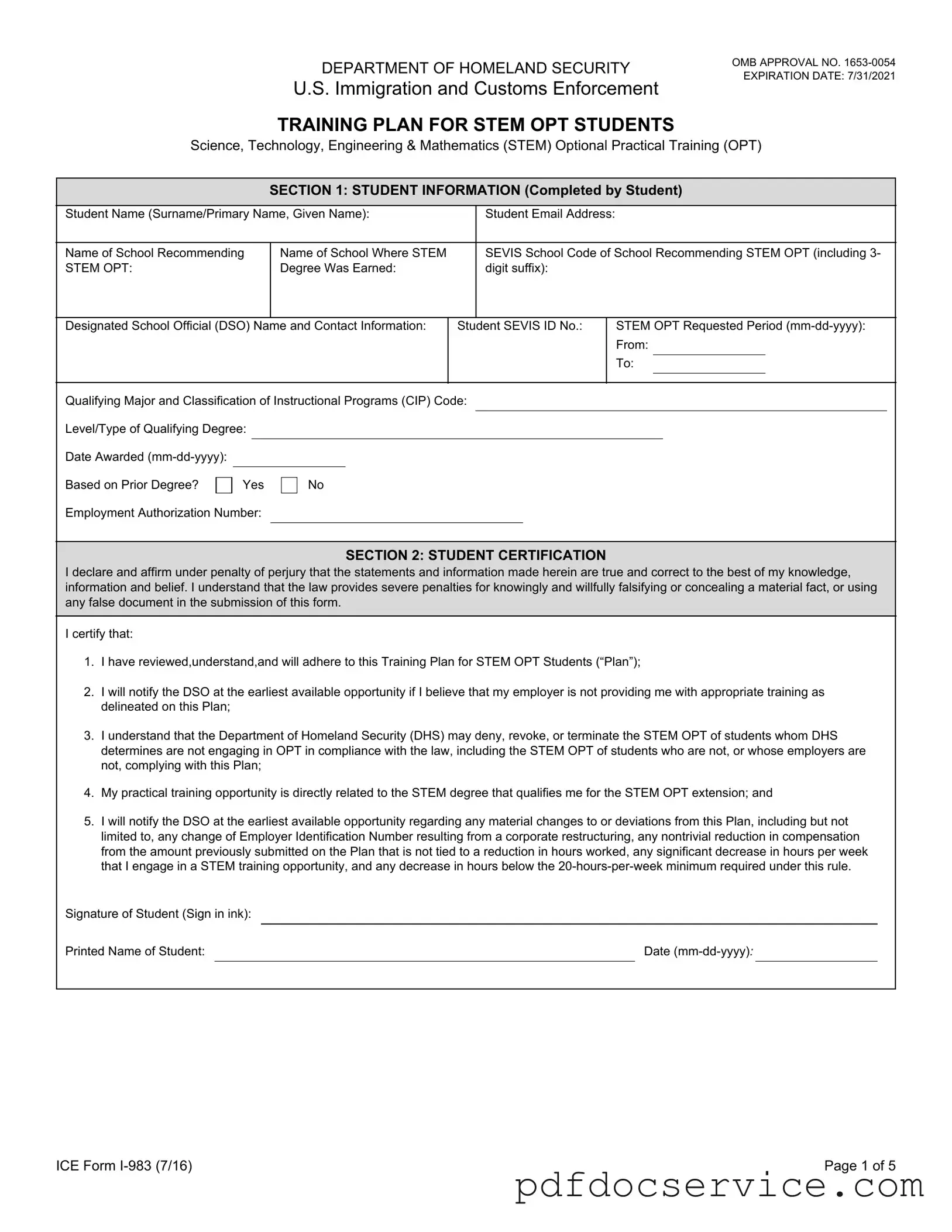The ICE I-983 form, also known as the "Training Plan for STEM OPT Students," is a document that outlines the training and learning objectives for students on Optional Practical Training (OPT) in STEM fields. It serves as a formal agreement between the student, their employer, and the designated school official (DSO) to ensure that the training meets the educational goals of the student.
Students who are applying for the STEM extension of their Optional Practical Training (OPT) must complete the I-983 form. This applies to those who have completed a degree in a qualifying STEM field and wish to extend their work authorization for an additional 24 months.
The I-983 form requires several key pieces of information, including:
-
Student's personal details (name, SEVIS ID, etc.)
-
Employer's information (name, address, and contact details)
-
Details about the training opportunity (job title, responsibilities, and goals)
-
Evaluation methods and how the student’s progress will be monitored
-
Assurances regarding the training experience
After completing the I-983 form, students must submit it to their DSO for review and approval. The DSO will then sign the form and provide it to the student. The student should keep a copy for their records and may need to submit it along with their STEM OPT application to USCIS.
What happens if my training plan changes?
If there are significant changes to your training plan, you must update the I-983 form. This includes changes in employer, job responsibilities, or any other relevant details. After making changes, submit the updated form to your DSO for approval.
The processing time for the I-983 form can vary. Once submitted to the DSO, they will review it, which may take a few days to a couple of weeks, depending on their workload. It’s advisable to submit the form well in advance of your OPT application deadline to allow for any necessary revisions.
If your employer is unfamiliar with the I-983 form, it can be helpful to provide them with a brief overview of its purpose and importance. You may also offer to assist them in filling it out or direct them to resources that explain the requirements. Clear communication can facilitate a smoother process for both you and your employer.
